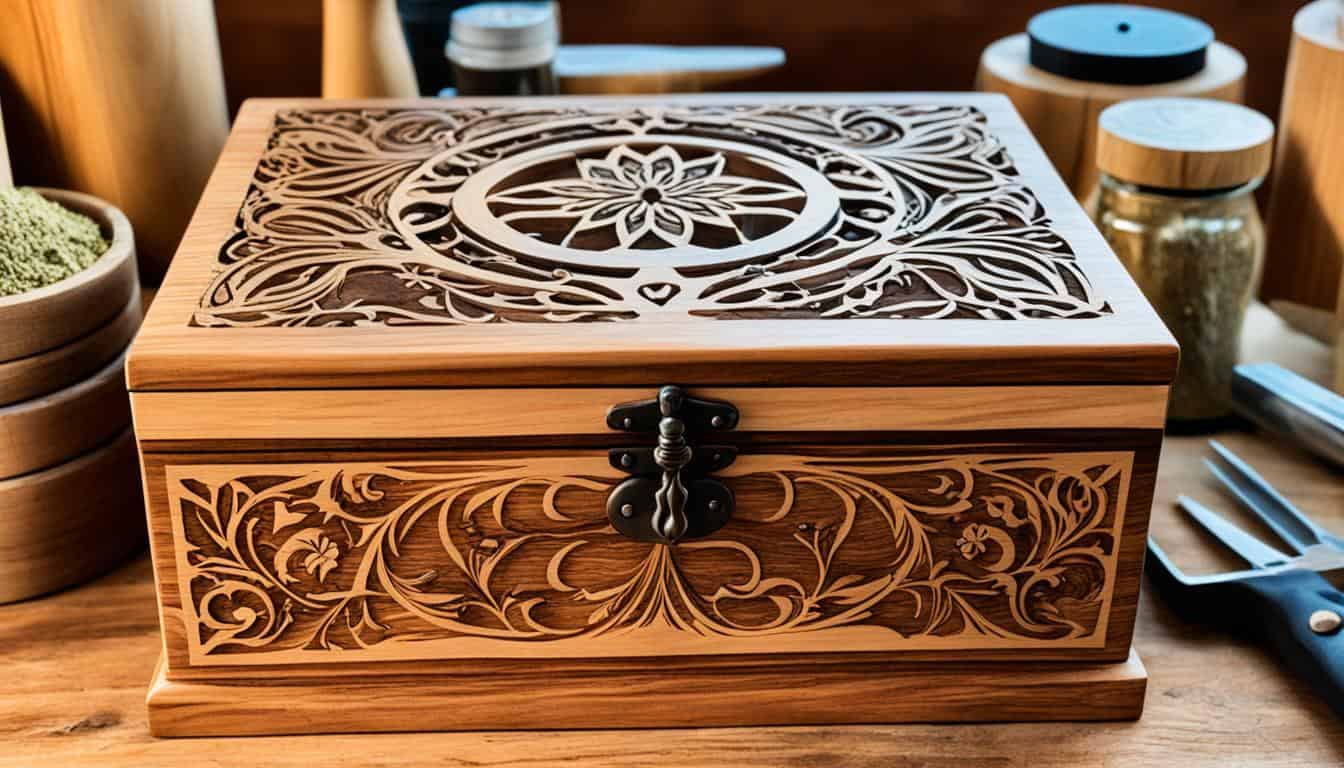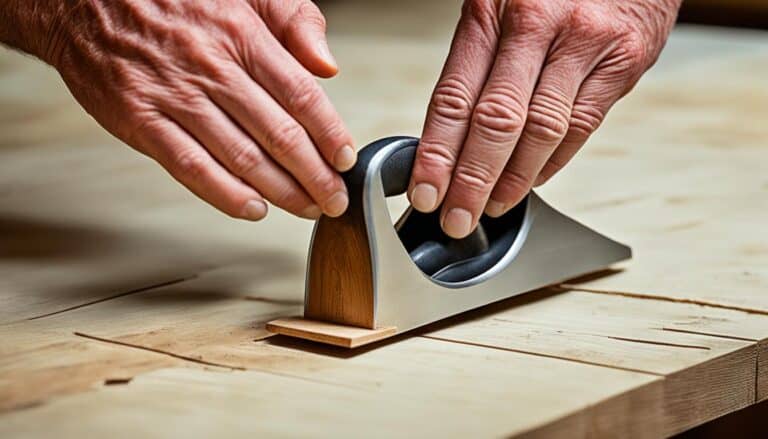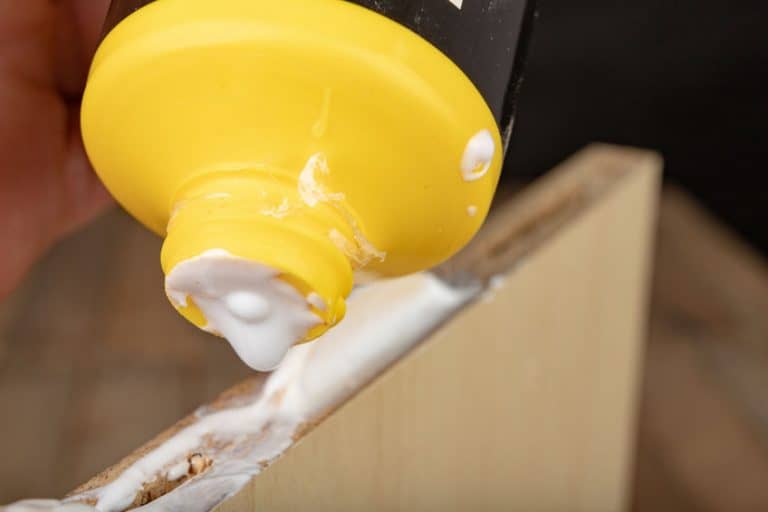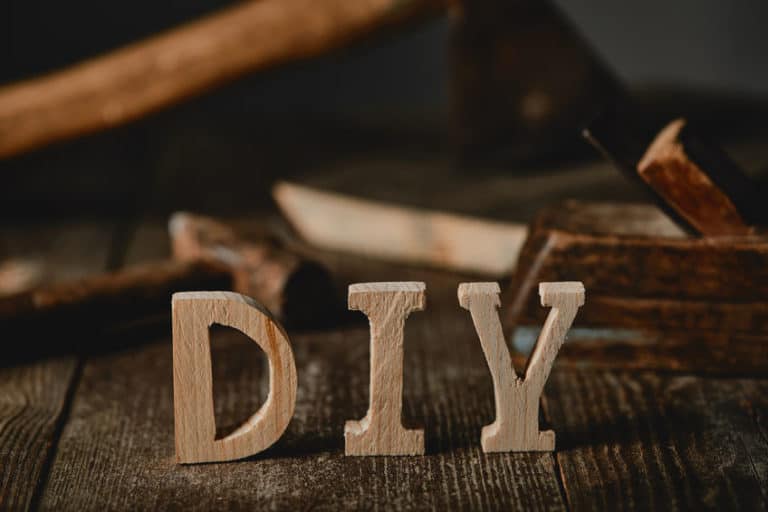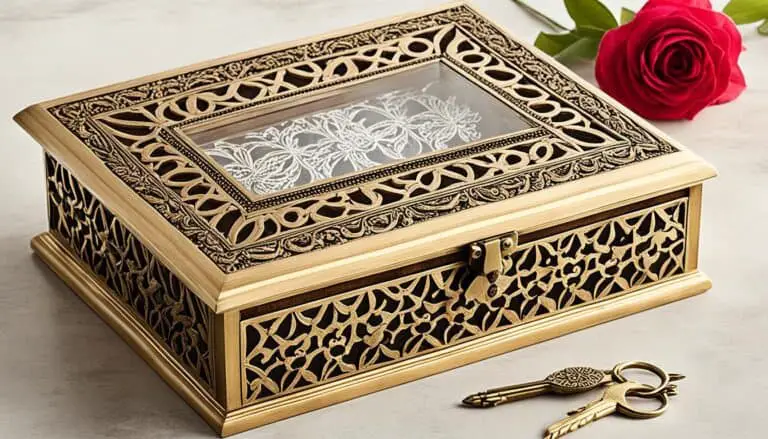Are you looking to elevate your woodworking projects to new levels of elegance and sophistication? Whether you’re a seasoned craftsman or just starting out, fine woodworking can transform your home with stunning, one-of-a-kind pieces. But where do you begin? How can you master the techniques and tools necessary to create truly remarkable projects? In this article, we’ll explore the world of fine woodworking and provide you with valuable tips to help you create elegant home projects that showcase your craftsmanship.
Key Takeaways:
- Fine woodworking is an art form that can elevate your home projects to new levels of elegance and sophistication.
- Choosing the right wood is crucial in fine woodworking, as different woods have unique characteristics that impact the overall look and feel of your projects.
- Mastering joinery techniques is essential for creating strong and visually appealing connections between wood pieces.
- Investing in essential woodworking tools, such as a table saw and hand planes, will help you achieve professional-level results.
- Having a well-thought-out plan and design is important before starting any fine woodworking project.
Choosing the Right Wood for Your Project
When it comes to fine woodworking, selecting the right wood is crucial. Different woods have unique characteristics and can greatly impact the overall look and feel of your project. Consider factors such as color, grain pattern, and durability when choosing the wood for your fine woodworking projects.
Factors to Consider
When choosing wood for your fine woodworking projects, it’s important to consider the following factors:
- Color: The color of the wood can influence the aesthetics of your project. Some woods, like mahogany and cherry, have rich reddish tones, while others, like maple and birch, have lighter hues.
- Grain Pattern: The grain pattern refers to the texture and markings on the wood’s surface. It can range from straight grains to intricate patterns. The grain pattern can add visual interest and character to your project.
- Durability: Consider the durability of the wood, especially if your project will be exposed to the elements or heavy use. Hardwoods like oak and teak are known for their strength and longevity.
By carefully considering these factors, you can choose the wood that best suits your fine woodworking project and achieves the desired look and durability.
GREAT GIFT IDEAS!
“The type of wood you choose will ultimately determine the success and longevity of your fine woodworking project. It’s important to select a wood that not only meets your aesthetic preferences but also matches the intended use of the piece.” – James Carpenter, Fine Woodworking Expert
Here are some popular wood choices for fine woodworking projects:
| Wood Type | Characteristics | Common Uses |
|---|---|---|
| Oak | Strong, durable, prominent grain pattern | Tables, chairs, cabinets |
| Cherry | Warm reddish-brown color, smooth grain | Furniture, trim, decorative pieces |
| Maple | Light color, subtle grain pattern | Cutting boards, cabinets, flooring |
| Walnut | Dark, rich color, straight grain | Desks, shelves, fine furniture |
Remember, each project is unique, and the choice of wood will depend on your personal preferences and the specific requirements of your project. Consult with experienced woodworkers or visit a local woodworking supply store for guidance on selecting the right wood for your fine woodworking endeavors.
Mastering Joinery Techniques
Joinery is a fundamental skill in fine woodworking. It involves creating strong and precise connections between pieces of wood. By mastering joinery techniques, you can ensure that your projects are not only visually appealing but also structurally sound.
There are several common joinery techniques that every fine woodworker should be familiar with:
- Dovetails: Dovetail joints are known for their strength and durability. They are commonly used in drawer construction and can provide an elegant touch to your projects.
- Mortise and Tenon: This classic joinery technique involves creating a mortise (a cavity) in one piece of wood and a tenon (a projecting part) in the other piece. It is a versatile method that can be used to join pieces at right angles or in a variety of other configurations.
- Box Joints: Box joints, also known as finger joints, are created by interlocking rectangular cuts in two pieces of wood. They provide strong corner joints and are often used in box and drawer construction.
Mastering these techniques requires practice and patience. By honing your joinery skills, you can elevate the quality of your fine woodworking projects and create pieces that will stand the test of time.
“Joinery is the heart and soul of woodworking. It is what gives a piece of furniture strength, durability, and beauty.”
Benefits of Mastering Joinery Techniques
When you become proficient in joinery techniques, you open up a world of possibilities for your fine woodworking projects. Here are some benefits of mastering joinery:
- Enhanced structural integrity: Properly crafted joints ensure that your projects are sturdy and stable, making them more durable and long-lasting.
- Improved aesthetics: Clean and precise joinery adds a touch of elegance to your woodworking pieces, elevating them to a higher level of craftsmanship.
- Expanded design options: With a solid foundation in joinery, you can explore more intricate and complex designs, pushing the boundaries of your creativity.
- Increased project versatility: By understanding different joinery techniques, you can choose the most appropriate method for each project, tailoring the joinery to meet specific requirements.
Remember, joinery is a skill that develops over time. Start with simple projects and gradually work your way up to more complex joinery techniques. Embrace the learning process and enjoy the satisfaction of creating beautifully crafted pieces that showcase your fine woodworking skills.
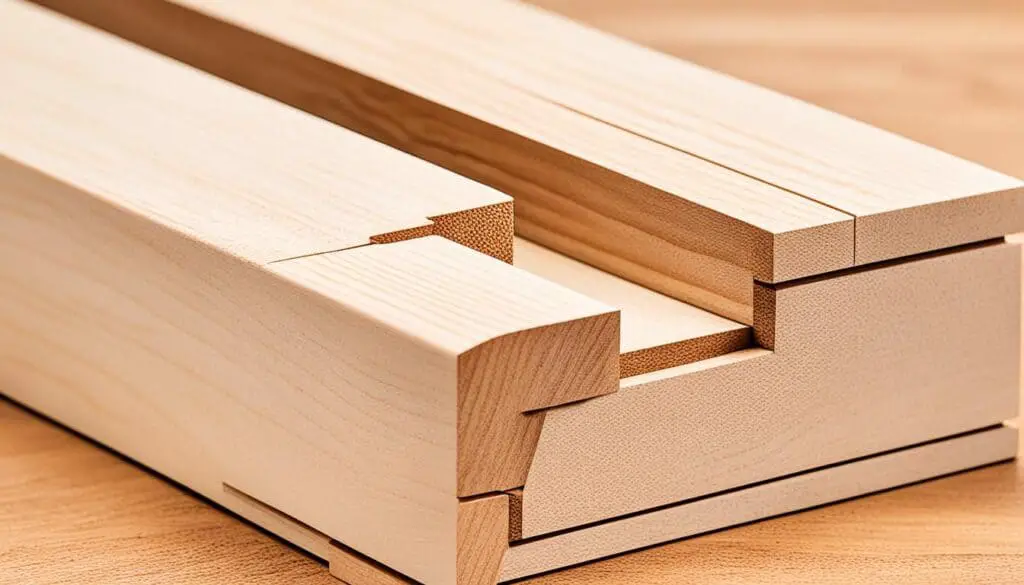
Comparison of Common Joinery Techniques
| Joinery Technique | Description | Strength | Aesthetic |
|---|---|---|---|
| Dovetails | Dovetail joints use interlocking wedge-shaped tails and pins to join two pieces of wood at right angles. They provide exceptional strength and are visually appealing. | High | Elegant |
| Mortise and Tenon | A mortise is a cavity cut into one piece of wood, while a tenon is a projecting part on another piece of wood. This technique creates a strong bond and is versatile in its applications. | Medium to High | Traditional |
| Box Joints | Box joints, or finger joints, feature interlocking rectangular cuts in two pieces of wood. They are commonly used in box and drawer construction and provide strong corner joints. | Medium | Clean |
Essential Woodworking Tools
To achieve professional-level results in fine woodworking, you need the right tools. Having a well-equipped workshop with essential tools not only enhances the quality of your craftsmanship but also makes your woodworking projects more enjoyable and efficient. Here are some must-have woodworking tools that every fine woodworker should consider:
Table Saw
A table saw is the centerpiece of any woodworking shop. It allows you to make straight cuts, rip boards, and create precise joinery. Look for a table saw with a sturdy construction, a powerful motor, and an accurate fence system for consistent and reliable performance.
Miter Saw
A miter saw is essential for making accurate crosscuts and mitered angles. It is particularly useful for cutting moldings, trim work, and framing components. Look for a miter saw with a sharp blade, a stable base, and an adjustable miter gauge for versatile cutting options.
Router
A router is a versatile tool that allows you to shape edges, create decorative profiles, and make precise joinery. It can be used for both freehand work and guided cuts with the help of router bits. Look for a router with variable speed control, a comfortable grip, and a range of interchangeable bits for maximum versatility.
Chisels
Chisels are indispensable for fine woodworking, enabling you to clean up joints, carve intricate details, and remove excess material. Invest in a set of high-quality chisels with sharp and durable blades. Different sizes and types of chisels will provide you with the versatility you need for various woodworking tasks.
Hand Planes
Hand planes are valuable for smoothing surfaces, leveling wood, and adding fine details. They allow you to achieve a glass-like finish by shaving off thin layers of wood. Invest in a few different types of hand planes, such as a block plane, a smoothing plane, and a jointer plane, for different purposes and projects.
These are just a few examples of essential woodworking tools that can help you elevate your fine woodworking projects. As you progress in your woodworking journey, you may find the need for additional specialized tools depending on the type of projects you pursue.
Remember, investing in high-quality tools will not only enhance your woodworking experience but also enable you to achieve outstanding results in your fine woodworking endeavors. With the right tools at your disposal, you’ll have the confidence to tackle complex projects and create remarkable pieces of craftsmanship.
“A good craftsman doesn’t blame their tools; they choose them wisely and master their use.”
Planning and Designing Your Project
Prior to embarking on your fine woodworking project, it is essential to develop a comprehensive plan and design. Taking the time to thoughtfully plan your project will not only save you time and effort but also ensure accurate measurements and a successful outcome.
One aspect of planning your project involves creating detailed sketches. These sketches serve as a visual representation of your vision and help you determine the best approach to bring your project to life. Alternatively, if you prefer a digital approach, you can utilize woodworking software to visualize your project and make precise measurements.
| Benefits of Planning and Designing Your Project | Steps |
|---|---|
| 1. Avoid Costly Mistakes |
|
| 2. Optimize Material Usage |
|
| 3. Ensure Structural Integrity |
|
| 4. Save Time and Effort |
|
| 5. Enhance Creativity |
|
With a solid plan in place, you can confidently move forward with your fine woodworking project, knowing that you have considered all the necessary details. Take the time to refine your design, ensuring that it aligns with your vision and desired outcome.
Remember, by dedicating time to plan and design your project, you are setting yourself up for success, enabling a smooth and satisfying woodworking experience.
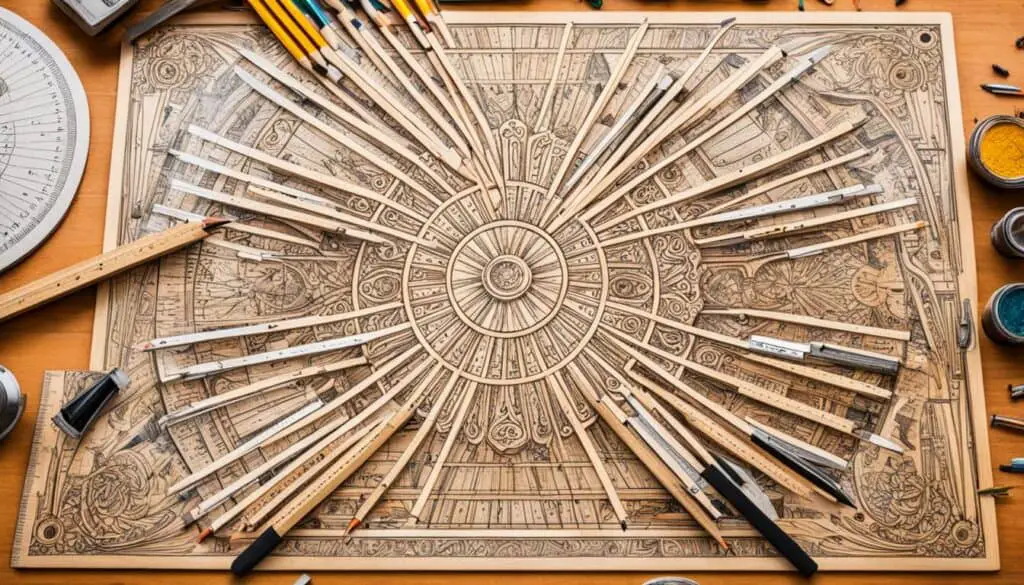
Enhancing Your Skills with Woodworking Classes
Taking woodworking classes is a valuable way to enhance your skills and learn new techniques from experienced professionals. Whether you’re a beginner or an advanced woodworker, there are classes available that cater to all skill levels. These classes can provide hands-on instruction and guidance to help you improve your fine woodworking skills.
Woodworking classes offer a structured learning environment where you can gain a deeper understanding of the craft. Through expert instruction and practical exercises, you’ll learn essential woodworking skills and techniques that can elevate the quality of your work.
Benefits of Woodworking Classes
- Expert Guidance: Learn from seasoned woodworking instructors who can share their knowledge and expertise.
- Hands-On Experience: Gain practical experience through hands-on projects and activities that build your woodworking skills.
- New Techniques: Discover new woodworking techniques that can expand your creative repertoire and provide fresh perspectives.
- Networking Opportunities: Connect with fellow woodworkers, share ideas, and build relationships within the woodworking community.
- Access to Tools and Equipment: Woodworking classes often provide access to a wide range of tools and equipment that you may not have at home.
“Woodworking classes offer a structured learning environment where you can gain a deeper understanding of the craft.”
Whether you prefer traditional joinery, intricate carving, or innovative woodworking methods, there’s a class out there tailored to your interests and skill level. Many woodworking schools and community colleges offer courses that cover a variety of topics, from basic woodworking skills to advanced techniques.
Choosing the Right Woodworking Classes
When selecting a woodworking class, consider the following factors:
- Course Content: Look for classes that align with your woodworking goals and focus on the specific techniques or projects you want to learn.
- Instructor Expertise: Research the instructor’s background and experience to ensure they have the necessary knowledge and skill set.
- Class Size: Consider the class size to ensure you’ll receive adequate attention and personalized instruction.
- Duration and Schedule: Check the class duration and schedule to find options that fit into your lifestyle and availability.
Enrolling in woodworking classes can be a transformative experience that allows you to refine your skills, gain inspiration, and connect with a community of fellow woodworking enthusiasts.
By immersing yourself in a learning environment, you’ll have the opportunity to ask questions, receive feedback, and further develop your woodworking techniques. So why wait? Invest in your woodworking journey by enrolling in a class today!
Fine Woodworking Projects for Every Room
Fine woodworking offers endless possibilities for creating custom pieces that will enhance the beauty and functionality of every room in your home. Whether you’re looking to add a unique bookcase to your living room or an elegant dining table to your kitchen, woodworking projects allow you to showcase your craftsmanship and create pieces that perfectly fit your space.
When choosing woodworking projects for each room, it’s important to consider the specific needs and style of the space. For example, a bedroom might benefit from a beautiful wooden bed frame or a set of custom-built bedside tables. In the kitchen, you could create a stunning wine rack or a handcrafted cutting board. In the home office, a well-designed desk or a set of built-in shelves can elevate the space and make it more functional.
Here are some fine woodworking project ideas for different rooms in your home:
Kitchen
- Custom-built kitchen island
- Handcrafted spice rack
- Wooden cutting board
- Elegant wine rack
Living Room
- Intricate bookcase
- Natural wood coffee table
- Custom-designed entertainment center
- Stylish side table
Bedroom
- Handmade wooden bed frame
- Personalized wooden jewelry box
- Bespoke dresser or chest of drawers
- Unique bedside tables
Home Office
- Custom-built desk with built-in storage
- Wooden file cabinet
- Shelving unit for organization
- Elegant desk accessories
By incorporating fine woodworking pieces into each room, you can create a cohesive and visually stunning home that reflects your style and personality. Whether you choose to tackle these projects on your own or work with a professional woodworker, the end result will be a space filled with exquisite craftsmanship and timeless beauty.
| Room | Woodworking Project Ideas |
|---|---|
| Kitchen | Custom-built kitchen island, Handcrafted spice rack, Wooden cutting board, Elegant wine rack |
| Living Room | Intricate bookcase, Natural wood coffee table, Custom-designed entertainment center, Stylish side table |
| Bedroom | Handmade wooden bed frame, Personalized wooden jewelry box, Bespoke dresser or chest of drawers, Unique bedside tables |
| Home Office | Custom-built desk with built-in storage, Wooden file cabinet, Shelving unit for organization, Elegant desk accessories |

“Woodworking projects allow you to create custom pieces that perfectly fit your space and showcase your craftsmanship.”
Tips for Finishing and Sanding
The finishing and sanding process is crucial in fine woodworking to achieve a smooth and professional-looking surface. By following the right techniques and using the appropriate tools, you can elevate the quality and beauty of your woodworking projects. Here are some essential tips to help you achieve the best results in finishing and sanding:
1. Start with Careful Sanding
Before applying any finish, it’s important to sand your project to remove any imperfections and create a smooth surface. Start with coarse-grit sandpaper to eliminate any rough spots or uneven edges. Gradually work your way up to finer-grit sandpaper to achieve a smooth and even surface. Take your time and be attentive to every detail during this process.
2. Choose the Right Sandpaper
The choice of sandpaper can greatly impact the outcome of your finishing and sanding. For fine woodworking projects, it’s recommended to use high-quality, fine-grit sandpaper. The finer the grit, the smoother the surface it will create. Look for sandpaper with a grit between 180 and 220 for most finishing and sanding applications.
3. Use Proper Sanding Techniques
When sanding, always move in the direction of the wood grain to avoid creating scratches or damaging the surface. Apply even pressure and use long, smooth strokes to ensure a consistent sanding pattern. Be cautious not to oversand or apply too much pressure, as this can lead to unevenness or wood damage.
4. Remove Dust and Debris
After sanding, it’s important to thoroughly clean the surface to remove any dust or debris. Use a clean, soft cloth or a vacuum with a brush attachment to carefully remove all particles. This will ensure a clean surface for applying the finish and prevent any imperfections caused by trapped debris.
5. Apply a High-Quality Finish
The finish is the final touch that protects and enhances the natural beauty of the wood. Choose a high-quality finish that suits your project, whether it’s a clear varnish, stain, or paint. Apply the finish evenly and follow the manufacturer’s instructions for drying time and additional coats if necessary. A well-applied finish can bring out the depth and character of the wood, making your fine woodworking project truly shine.
Remember, fine woodworking is a meticulous craft that requires attention to detail, patience, and skill. Take your time during the finishing and sanding process to ensure the best possible outcome. With practice and the right techniques, you’ll achieve stunning results that showcase your craftsmanship.
| Tip | Details |
|---|---|
| Start with Careful Sanding | Sand your project with coarse-grit sandpaper, gradually moving to finer grits for a smooth surface. |
| Choose the Right Sandpaper | Use high-quality, fine-grit sandpaper (around 180-220 grit) for fine woodworking projects. |
| Use Proper Sanding Techniques | Sand in the direction of the wood grain, apply even pressure, and use long, smooth strokes. |
| Remove Dust and Debris | Clean the sanded surface thoroughly to remove any dust or debris before applying the finish. |
| Apply a High-Quality Finish | Choose a suitable finish and apply it evenly according to the manufacturer’s instructions. |
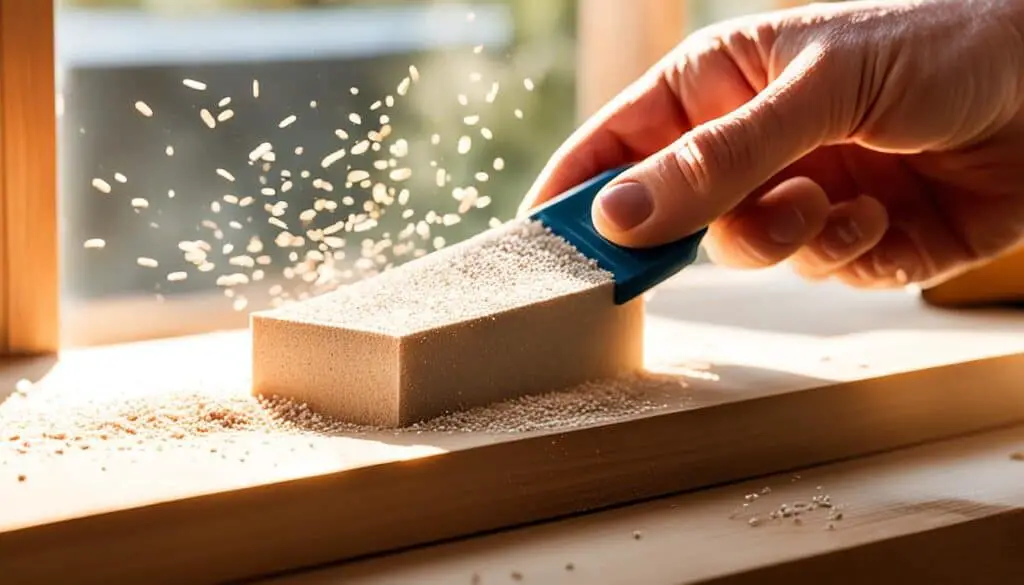
Creating Unique Woodworking Details
When it comes to fine woodworking, the details are what set your projects apart and make them truly extraordinary. By incorporating unique woodworking techniques into your designs, you can add depth, complexity, and a touch of artistry to your pieces.
Carving
Carving is a time-honored technique that allows you to create intricate designs and patterns directly into the wood. From delicate floral motifs to bold geometric shapes, carving adds texture and visual interest to your projects. Whether you prefer traditional hand carving or modern power carving tools, this technique can transform your woodworking pieces into works of art.
Inlay Work
Inlay work involves embedding decorative materials, such as wood, metal, or stone, into the surface of your woodworking projects. This technique allows you to create stunning contrast, highlighting specific areas or creating intricate patterns. Inlay work can be particularly effective in adding elegance and sophistication to furniture, jewelry boxes, or decorative accents.
Veneering
Veneering is a technique where a thin layer of high-quality wood, known as veneer, is applied to the surface of a lesser expensive wood. This allows you to achieve the look and feel of a premium wood species without the cost. Veneering opens up a world of possibilities, giving you the opportunity to work with highly figured or exotic woods that may be otherwise inaccessible.
Remember, the key to creating unique woodworking details is to experiment and push the boundaries of traditional techniques. By combining multiple methods or adding your own twist, you can create truly one-of-a-kind pieces that reflect your individual style and craftsmanship.
Take a look at this stunning example of a woodworking project that incorporates unique details:
| Project Name | Description |
|---|---|
| Custom Carved Coffee Table | This coffee table features a hand-carved top with intricate floral designs. The carving adds a touch of elegance and creates a focal point in any living room. |
As you can see, the carving detail takes this coffee table from a simple piece of furniture to a true work of art.
By incorporating unique woodworking techniques like carving, inlay work, or veneering into your projects, you can elevate your craftsmanship and create pieces that truly stand out. These details not only add visual interest but also showcase your skill and attention to detail.
Fine Woodworking for Beginners
If you’re new to fine woodworking, starting with beginner-friendly projects is a great way to build your skills and confidence. Simple projects like cutting boards or small furniture pieces can help you practice fundamental techniques and develop a solid foundation in fine woodworking.
Get Started with Beginner-Friendly Projects
When diving into the world of fine woodworking, it’s important to choose projects that are suitable for beginners. These projects are designed to be manageable in terms of complexity and skill level, allowing you to learn and progress at your own pace.
Consider starting with projects that focus on basic joinery techniques like butt joints or simple woodworking tasks like sanding and finishing. These projects will help you understand the fundamental principles of fine woodworking while building your confidence and expertise.
Key Benefits of Beginner-Friendly Projects
- Opportunity to practice essential woodworking techniques
- Build confidence and experience with each completed project
- Develop a solid foundation in fine woodworking
- Create functional and beautiful pieces for your home
By starting with projects that are tailored to beginners, you can gradually master the necessary skills and techniques of fine woodworking. As you gain confidence and expertise, you’ll be able to take on more advanced projects and push the boundaries of your creativity.
Remember, even the most experienced woodworkers started as beginners. Don’t be afraid to make mistakes and learn from them. Embrace the learning process and enjoy the journey of developing your fine woodworking skills.
With the right guidance and practice, you’ll soon discover the joy of creating beautiful, handcrafted pieces through fine woodworking. So gather your tools, choose a beginner-friendly project, and embark on your woodworking journey today!
Showcasing Your Fine Woodworking Skills
Once you have honed your fine woodworking skills, it’s time to show the world what you’re capable of. There are various ways to showcase your craftsmanship and gain recognition for your talent. Consider entering your projects into competitions or exhibiting them in woodworking exhibitions.
Participating in competitions allows you to compare your skills with other fine woodworkers and compete for prestigious awards. It’s a chance to put your woodworking projects to the test and receive valuable feedback from experts in the field. Who knows, you might even walk away with a well-deserved win!
“Competitions provide an excellent opportunity to challenge yourself, learn from others, and push the boundaries of your creativity.” – John Smith, award-winning fine woodworker.
In addition to competitions, showcasing your projects in woodworking exhibitions gives you a platform to share your craftsmanship with a broader audience. These exhibitions attract fellow woodworkers, industry professionals, and woodworking enthusiasts who appreciate the artistry and skill involved in fine woodworking. It’s a chance to connect with like-minded individuals, gain inspiration, and learn from their experiences.
Exhibiting your projects also allows you to receive valuable feedback from visitors, which can be instrumental in refining your skills and improving future projects. You might even receive commissions or inquiries from individuals interested in owning your unique pieces.
Remember, showcasing your fine woodworking skills is not just about gaining recognition; it’s also an opportunity for personal growth and continuous learning. By exposing your projects to a wider audience, you open yourself up to new perspectives, ideas, and collaborations within the woodworking community.
Benefits of Showcasing Your Fine Woodworking
- Gain recognition for your craftsmanship
- Receive valuable feedback from experts
- Connect with other fine woodworkers
- Expand your network and gain inspiration
- Potential for commissions and sales
So, don’t keep your beautiful woodworking projects hidden away in your workshop. Share them with the world and let your craftsmanship shine!
Building a Fine Woodworking Community
Joining a woodworking community is a fantastic way to connect with fellow enthusiasts who share your passion for fine woodworking. By becoming part of a community, you’ll have the opportunity to share ideas, gain inspiration, and learn from others’ experiences. Whether you’re a beginner or an experienced woodworker, the woodworking community can offer valuable support and knowledge to help you grow in your craft.
To start building your fine woodworking community, consider the following:
- Local Woodworking Groups: Seek out local woodworking groups in your area. These groups often host regular meetings, workshops, and events where you can meet fellow woodworkers, exchange tips and tricks, and engage in collaborative projects.
- Connect with local woodworking suppliers or visit specialty stores to inquire about any community groups operating in your area. They may be able to provide you with information or contacts to get involved.
- Woodworking Events and Conferences: Attend woodworking events and conferences that bring together woodworkers of all skill levels. These gatherings offer opportunities to learn from experts, participate in workshops, and explore the latest tools and techniques in the industry.
- Stay updated on upcoming woodworking events through online platforms, magazines, or by joining relevant mailing lists.
- Online Woodworking Forums and Social Media Groups: Engage with the woodworking community by joining online forums and social media groups. These platforms provide spaces for discussions, sharing project ideas, and seeking advice from experienced woodworkers.
- Research reputable online forums and groups that focus on fine woodworking to ensure you’re participating in a supportive and knowledgeable community.
By actively participating in the fine woodworking community, you can foster connections, gain new insights, and broaden your woodworking horizons. Embrace the immense value that comes from being part of a community that shares your dedication and enthusiasm for fine woodworking.
Quote:
“Woodworking is a journey best shared with others. Connecting with like-minded individuals in the woodworking community can ignite inspiration, deepen your skills, and provide the support needed to overcome challenges.” – Ethan Jones, Master Woodworker
Now, let’s take a look at how fine woodworking events can further enrich your woodworking experience.
| Benefits of Joining a Woodworking Community | Woodworking Events |
|---|---|
|
|
Resources for Fine Woodworking Inspiration
Finding inspiration for your fine woodworking projects is essential to keep your creativity flowing. The world of fine woodworking offers a wealth of resources that can ignite your imagination and guide you towards new ideas and designs. Whether you prefer the tactile experience of flipping through magazines, the in-depth knowledge found in books, or the vast digital landscape of online platforms, there is something for every fine woodworker seeking inspiration.
Woodworking Magazines: Subscribing to woodworking magazines is an excellent way to stay up-to-date with the latest trends, techniques, and project ideas in the fine woodworking community. Popular magazines like Fine Woodworking, Woodsmith, and Popular Woodworking feature articles and project plans from renowned woodworkers, tips and tricks for honing your skills, and inspiring photography of exquisite woodworking creations.
Woodworking Books: Books are a timeless source of knowledge and inspiration for woodworkers. Explore the works of seasoned craftsmen and experts who share their expertise and insights through beautifully illustrated books. Some classics in the field include The Complete Manual of Woodworking by Albert Jackson and David Day, A Cabinetmaker’s Notebook by James Krenov, and The Essential Woodworker by Robert Wearing.
Online Platforms: The internet has opened up a whole new world of woodworking inspiration. Online platforms like forums, blogs, and social media communities provide a vibrant space for woodworkers to connect, share ideas, and showcase their work. Joining online forums such as WoodNet and Woodworking Talk allows you to engage in discussions, seek advice from experienced woodworkers, and gain insights into emerging woodworking trends. Following renowned woodworkers on social media platforms like Instagram and YouTube provides a visual feast of stunning woodworking projects and behind-the-scenes glimpses into the lives of woodworking artisans.
Remember, inspiration can strike from unexpected sources. Visiting art galleries, attending woodworking exhibitions, and exploring nature can also spark your creative vision and push the boundaries of your fine woodworking projects.
“Design is everything in fine woodworking. It’s about letting the wood speak to you and finding inspiration in the world around you.” – David Marks
Affordable Woodworking Classes Online
If you’re looking to enhance your skills and learn new techniques, online woodworking classes provide a convenient and affordable way to expand your knowledge. These classes cater to various skill levels, from beginners seeking a solid foundation to advanced woodworkers looking to refine their expertise. Some reputable online platforms offering woodworking courses include:
| Platform | Features |
|---|---|
| LearntoWoodwork.com | • Video lessons covering a wide range of woodworking projects and techniques • Interactive Q&A sessions with instructors • Accessible on-demand classes • Beginner-friendly courses |
| Woodworkers Guild of America | • Extensive library of video workshops • Monthly magazine • Live webinars with industry experts • Membership community for sharing and discussion |
| Craftsy | • High-quality, professionally filmed video lessons • Lifetime access to purchased classes • Variety of woodworking topics and skill levels covered |
| Popular Woodworking University | • In-depth woodworking courses taught by renowned instructors • Step-by-step projects with detailed instructions • Community forums for interaction and feedback |
Whether you prefer the hands-on experience of in-person classes or the flexibility of online learning, investing in your skills through woodworking classes can provide valuable insights, techniques, and inspiration to take your fine woodworking projects to the next level.
Conclusion
Fine woodworking is a rewarding pursuit that allows you to create stunning, one-of-a-kind pieces for your home. Through a combination of honing your skills, investing in quality tools, and finding inspiration in the woodworking community, you can elevate your woodworking projects to new heights of elegance and craftsmanship.
By dedicating yourself to learning and practicing fine woodworking techniques, you can transform ordinary pieces of wood into works of art that will enhance the beauty and functionality of your home. Whether it’s a handcrafted dining table, an intricately designed bookcase, or a delicate wood carving, each project presents an opportunity to showcase your creativity and skill.
Starting your fine woodworking journey today opens the door to endless possibilities. Take the time to acquire the necessary skills and knowledge, invest in reliable woodworking tools, and immerse yourself in the supportive community of fellow woodworkers. This will not only expand your craft but also provide a source of inspiration and encouragement as you continuously improve.
Unlock the potential to create your own artisanal masterpieces and transform your home with the timeless beauty and elegance of fine woodworking. Begin your journey today and experience the joy of crafting unique, handcrafted pieces that will leave a lasting impression for generations to come.
FAQ
What is fine woodworking?
Fine woodworking is an art form that involves creating elegant and sophisticated pieces using various woodworking techniques.
Why is selecting the right wood important in fine woodworking?
Different woods have unique characteristics that can greatly impact the overall look and feel of your project.
What are some common joinery techniques in fine woodworking?
Some common joinery techniques include dovetails, mortise and tenon, and box joints.
What are some essential woodworking tools for fine woodworking?
Essential woodworking tools include a table saw, a miter saw, a router, chisels, and hand planes.
Is planning and designing important in fine woodworking?
Yes, having a well-thought-out plan and design is crucial to ensure accurate measurements and prevent costly mistakes.
Are woodworking classes beneficial for improving fine woodworking skills?
Yes, woodworking classes provide hands-on instruction and guidance to help improve fine woodworking skills.
What are some fine woodworking project ideas for different rooms?
Fine woodworking offers endless possibilities, from intricate bookcases to elegant dining tables, to add beauty and functionality to any room.
Why is finishing and sanding important in fine woodworking?
Finishing and sanding ensure a smooth and professional-looking surface, enhancing the natural beauty of the wood.
How can unique woodworking details be incorporated into projects?
Unique woodworking details, such as carving, inlay work, or veneering, can add depth and complexity to projects.
What are some beginner-friendly fine woodworking projects?
Beginner-friendly projects include cutting boards and small furniture pieces that help develop fundamental techniques.
Should fine woodworking projects be showcased or entered in competitions?
Yes, showcasing projects in exhibitions and competitions allows for recognition and learning from other fine woodworkers.
How can I connect with other woodworking enthusiasts?
Joining a woodworking community, attending events, and participating in conferences are great ways to connect with like-minded individuals.
Where can I find inspiration for fine woodworking projects?
Explore woodworking magazines, books, online platforms, and follow renowned woodworkers to discover new ideas and trends in the woodworking world.


